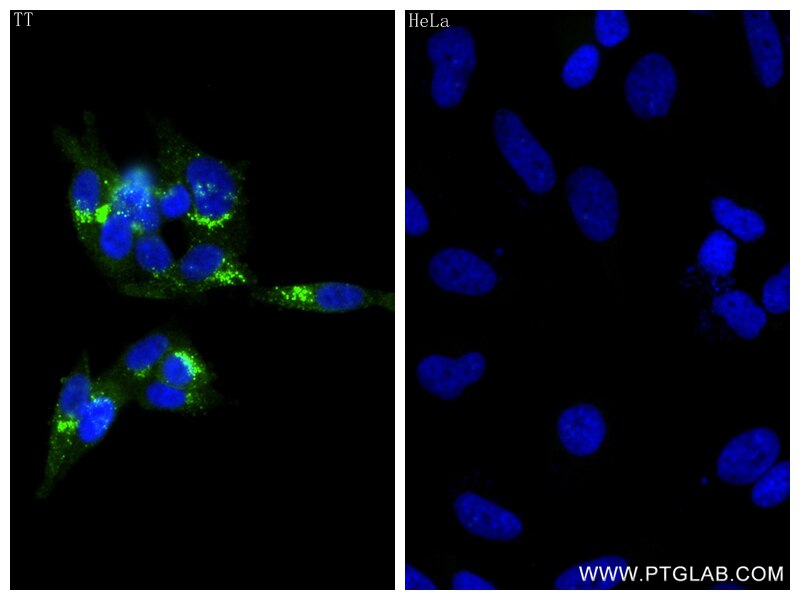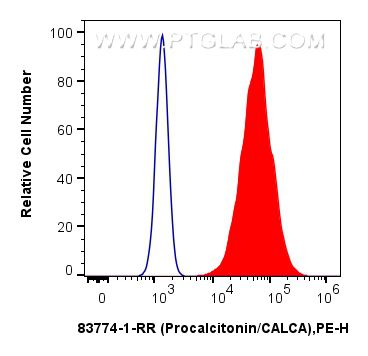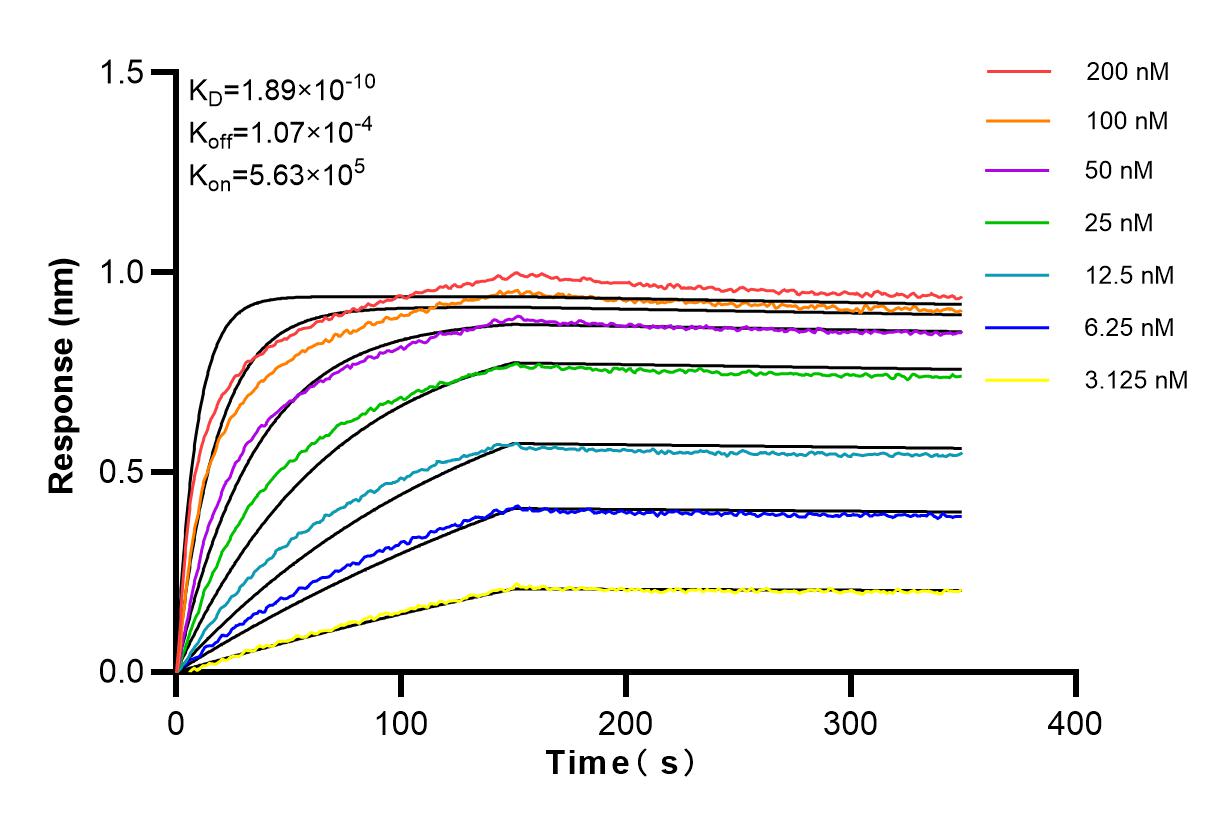Validation Data Gallery
Tested Applications
| Positive IF/ICC detected in | TT cells |
| Positive FC (Intra) detected in | TT cells |
Recommended dilution
| Application | Dilution |
|---|---|
| Immunofluorescence (IF)/ICC | IF/ICC : 1:200-1:800 |
| Flow Cytometry (FC) (INTRA) | FC (INTRA) : 0.25 ug per 10^6 cells in a 100 µl suspension |
| It is recommended that this reagent should be titrated in each testing system to obtain optimal results. | |
| Sample-dependent, Check data in validation data gallery. | |
Product Information
83774-1-RR targets CALCA/Calcitonin in IF/ICC, FC (Intra), ELISA applications and shows reactivity with human samples.
| Tested Reactivity | human |
| Host / Isotype | Rabbit / IgG |
| Class | Recombinant |
| Type | Antibody |
| Immunogen | Recombinant protein 相同性解析による交差性が予測される生物種 |
| Full Name | Calcitonin |
| Calculated molecular weight | 15kDa |
| GenBank accession number | NM_001741.3 |
| Gene Symbol | CALCA |
| Gene ID (NCBI) | 796 |
| RRID | AB_3671370 |
| Conjugate | Unconjugated |
| Form | Liquid |
| Purification Method | Protein A purification |
| UNIPROT ID | P01258 |
| Storage Buffer | PBS with 0.02% sodium azide and 50% glycerol , pH 7.3 |
| Storage Conditions | Store at -20°C. Stable for one year after shipment. Aliquoting is unnecessary for -20oC storage. |
Background Information
Calcitonin is a peptide hormone consisting of 32 amino acids, primarily synthesized by the parafollicular cells (C cells) of the human thyroid gland. It plays a crucial role in regulating calcium levels in the blood by decreasing them. Calcitonin opposes the actions of parathyroid hormone, which increases blood calcium levels. Calcitonin works through a G protein-coupled receptor, known as the calcitonin receptor, which predominantly transmits signals via the cAMP and PLC/IP3 pathways. Its primary physiological effects are on osteoclasts and the tubular epithelium of kidneys.
Protocols
| Product Specific Protocols | |
|---|---|
| IF protocol for CALCA/Calcitonin antibody 83774-1-RR | Download protocol |
| Standard Protocols | |
|---|---|
| Click here to view our Standard Protocols |


